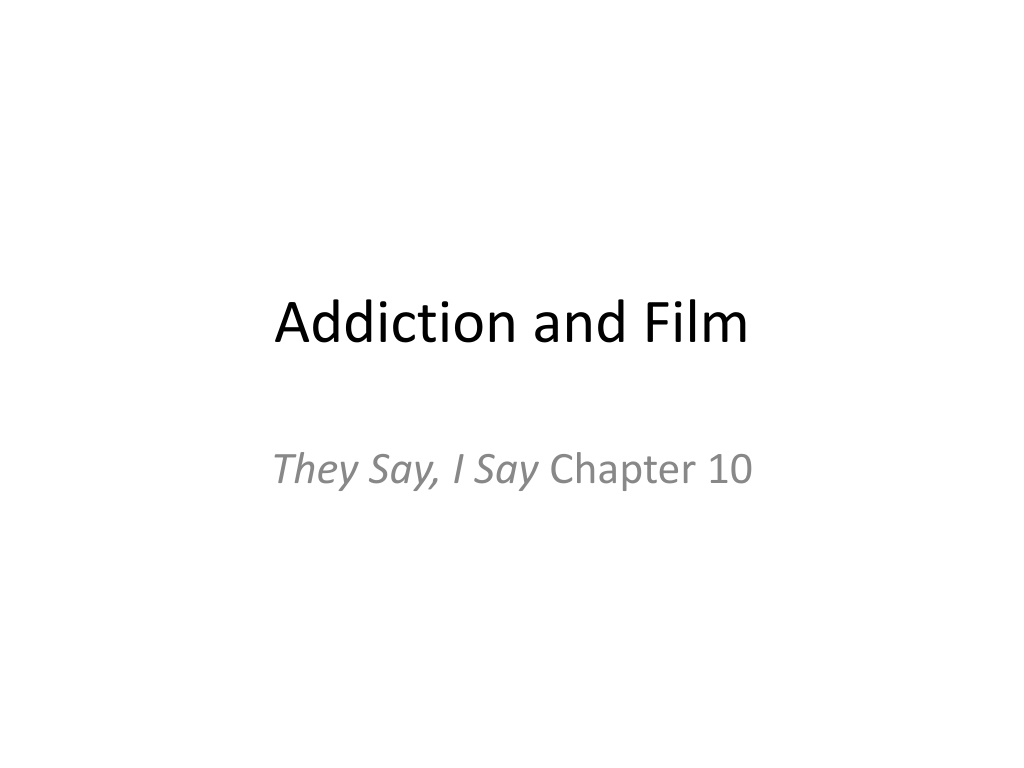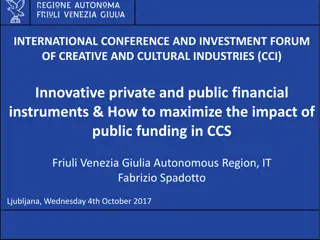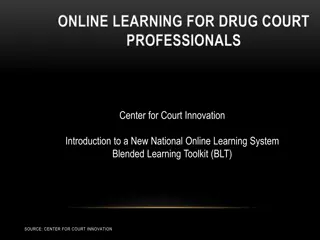Evolution of Drug Depictions in Cinema
Explore the portrayal of drug use and addiction in films throughout history, from sensationalized and sympathetic depictions to censorship issues under the Motion Picture Production Code. Discover how cultural attitudes towards drug use have changed over time and how filmmakers have navigated these shifts.
Download Presentation

Please find below an Image/Link to download the presentation.
The content on the website is provided AS IS for your information and personal use only. It may not be sold, licensed, or shared on other websites without obtaining consent from the author.If you encounter any issues during the download, it is possible that the publisher has removed the file from their server.
You are allowed to download the files provided on this website for personal or commercial use, subject to the condition that they are used lawfully. All files are the property of their respective owners.
The content on the website is provided AS IS for your information and personal use only. It may not be sold, licensed, or shared on other websites without obtaining consent from the author.
E N D
Presentation Transcript
Addiction and Film They Say, I Say Chapter 10
Quickwrite #10 Think of a portrayal of drug use, alcohol use, or addiction that you have seen on film or television. Was the portrayal sensationalized? (Trying to shock the audience.) Was it sympathetic? Funny? Realistic? What do you think that this portrayal of addiction says about the attitudes of the artists who produced it and the culture who watches it?
Addiction and Recovery in American Film p. 335 According to the author, how has the depiction of drug use in American film changed over time? What do these changes tell us about how our culture thinks about drug use and addiction? How do these changes mirror changing attitudes/ideas?
The question of censorship In paragraph 6, Hall states that the Motion Picture Production Code upheld moral standards and opposed crime, wrongdoing, evil, or sin. Moviemakers dutifully followed these rules (335). The big question here is whether or not it is the responsibility of a piece of art to uphold moral standards. The writers and enforcers of the code were operating under that assumption (and were also afraid of federal regulation). What do you think?
Thou Shalt Not Photograph by A. L. Schafer In 1934 the MPAA voluntarily passed the Motion Picture Production Code, more generally known as the Hays Code, largely to avoid governmental regulation. The code prohibited certain plotlines and imagery from films and in publicity materials produced by the MPAA. Among others, there was to be no cleavage, no lace underthings, no drugs or drinking, no corpses, and no one shown getting away with a crime. A.L. Schafer, the head of photography at Columbia, took a photo that intentionally incorporated all of the 10 banned items into one image. The photograph was clandestinely (secretly) passed around among photographers and publicists in Hollywood as a method of symbolic protest to the Hays Code (Jordan).
Reefer Madness Poster This is a poster for one of the films discussed in the essay. It was released in 1936. What do you notice about this poster? What message does it seem to be sending about its subject of marijuana use? Keep in mind that this poster was released during the Code Era, when there were strict rules about how drug use, sex, and violence could be depicted in film.

























